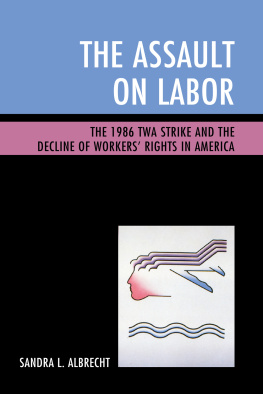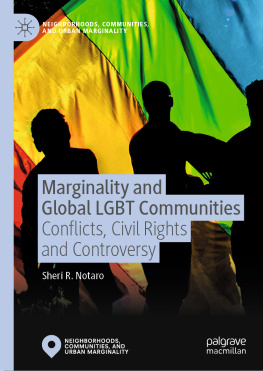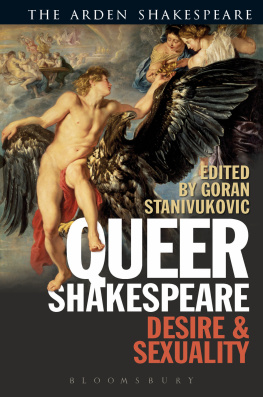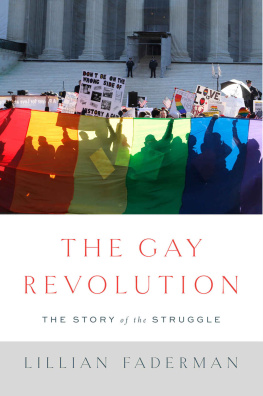
PLANE QUEER
Phil Tiemeyer PLANE QUEER
Labor, Sexuality, and AIDS in the
History of Male Flight Attendants

University of California Press
BerkeleyLos AngelesLondon
University of California Press, one of the most distinguished university presses in the United States, enriches lives around the world by advancing scholarship in the humanities, social sciences, and natural sciences. Its activities are supported by the UC Press Foundation and by philanthropic contributions from individuals and institutions. For more information, visit www.ucpress.edu.
University of California Press
Berkeley and Los Angeles, California
University of California Press, Ltd.
London, England
2013 by The Regents of the University of California
Library of Congress Cataloging-in-Publication Data
Tiemeyer, Philip James, 1970.
Plane queer : labor, sexuality, and AIDS in the history of male flight attendants / Phil Tiemeyer.
p. cm.
Includes bibliographical references and index.
ISBN 978-0-520-27476-1 (cloth : alk. paper)
ISBN 978-0-520-27477-8 (pbk. : alk. paper)
ISBN 978-0-520-95530-1 (ebook)
1. Flight attendantsUnited StatesHistory. 2. Flight attendantsLabor unionsUnited States. GaysEmploymentUnited States. 4. Sexual orientationUnited States. 5. Civil rightsUnited StatesHistory. I. Title.
HD6073.A432T54 2013
331.761387742dc232012041959
Manufactured in the United States of America
21 20 19 18 17 16 15 14 13
10 9 8 7 6 5 4 3 2 1
In keeping with a commitment to support environmentally responsible and sustainable printing practices, UC Press has printed this book on Rolland Enviro100, a 100% postconsumer fiber paper that is FSC certified, deinked, processed chlorine-free, and manufactured with renewable biogas energy. It is acid-free and EcoLogo certified.
CONTENTS
ILLUSTRATIONS
ACKNOWLEDGMENTS
In the absence of ample archival sources, this book could not have been written without the help of former flight attendants. These men and women sat down with me, sometimes for hours, and recounted their histories with riveting honesty. They detailed not only the highlights of their careers but the many slights they had endured as well. The gay men were particularly insightful, sharing otherwise unrecorded stories of coming out and falling in love on the job, at times fearing ridicule and at other times enjoying the connections of friendships that spanned the globe. When it came to stories of lossespecially during the AIDS crisisthey also shared their pain, and sometimes even guilt, for surviving when their loved ones didnt. Whatever this book has accomplished in detailing this career owes more to these men and women than to my own work.
I am also indebted to a cadre of archivists across North America who helped me string together various loose threads into a solidly researched narrative. I especially thank Craig Likness at the University of Miami for helping me co-discover my topic in the first place, Bill Gulley at the Walter Reuther Labor Archives in Detroit for patiently explaining the intricacies of labor union structures, the staff at the ONE Archives in Los Angeles for chewing over my topic at lunches that were informative and full of laughter, Cilla Golas at the Association of Professional Flight Attendants Archives for bringing American Airlines flight attendant history alive with humor and depth, and James Folts and his colleagues at the New York State Archives for their persistence in tracking down obscure legal files. Thanks also to the following institutions for their generous support: the University of Texas for a Continuing Fellowship, the New York State Archives for a Hackman Research Fellowship, Philadelphia University for a Faculty Research Grant and various other forms of financial support, and the Smithsonian National Air and Space Museum for a Guggenheim Fellowship.
One of the joys of writing this book is that I now belong to intellectual institutions where the pursuit of knowledge has overlapped seamlessly with the forging of friendships. The Department of American Studies at the University of Texas at Austin was a fantastic intellectual flight school. My dissertation chair, Janet Davis, is a living example of the flight attendants I so admire. She guided me safely through a PhD program with the charm, humor, and devotion that surely made her a great Northwest Airlines stewardess before becoming a historian and, later on, the devoted steward for my academic career. I also couldnt ask for better colleagues than those I have at Philadelphia University, especially those of us in Ravenhill Mansion. Our assemblage of liberal arts and social science scholars makes for the right blend of synergy and independence that allows fine scholarship and stellar teaching to thrive. My colleagues at the Smithsonian National Air and Space Museum found the most gentle ways to invite this social historian of sexuality into their fascination of machinery, without ever making me an outsider. I especially thank curators Dom Pisano and Martin Collins, who made my year as a Guggenheim Fellow so collegial. I am also indebted to my friend Collette Williams at NASM, who always had a way of keeping me grounded when my intellectual gears came unhinged. Finally, I am grateful to my editor at the University of California Press, Niels Hooper, for retaining his enthusiasm for my project from our first meeting until today. Even when our collaboration encountered unexpected turbulence, Niels reassured me with a combination of calm and persistence, coupled with genuine personal warmth, that kept this project flying.
My grandma is ultimately responsible for this book. When I was six years old, she took me on my first flight, whisking me away from my backyard in St. Louis to the desert landscape of New Mexico. All these years later, our time there stands out less in my memory than my flight on TWA with Grandma by my side. She loaded me up with gum to keep my ears from popping and only let out the slightest chuckle when I asked her, quite concerned, if our jet was going to do flips like the ones I saw on TV. Grandma held my hand all the way to Albuquerque and let me fall asleep in her lap, giving me just the security I needed to plant the seeds of a lifetime love affair with travel.
Over the years, Mom and Dad have nurtured this love affair. Often confused as a homebody, those of us who love Dad know that hes most in his element driving a car on a family vacation. Hes at his funniest and most revealing with eyes on the road and hands on the wheel, destination westward, mountains just coming into sight. Meanwhile, Mom taught me that its okay to explore even more distant horizons. She showed me Europe for the first time and remains my favorite travel companion to this day. Most importantly, Mom and Joan, my second mom, showed me that I would still be loved even if I pursued my passions far away from home. The suburban backyards of St. Louis werent for everyone, and Mom would come find me wherever I ended up. She has, and so has Dad. In my lifes various changes of course and the occasional emergency landing, theyve held my hand, just like Grandma on my first flight. And that backyard in St. Louis is still there, too, nurtured by Mom and Dads fifty-year love affair.
I owe tremendous gratitude to Charlie for taking me deeper into love than I ever dared to dream as a child. We had a great voyage together, to places as disparate as Minneapolis, Newfoundland, and Austin. Im delighted that we still get to travel together as family, if not as co-pilots. Well probably settle down close by each other in a fabulous flight attendant getaway, ideally on the set of the Golden Girls, still fighting over which of us gets to be Dorothy. Its me, by the way, and youre Rose, and Brian is our Blanche.
Next page









